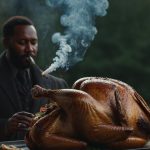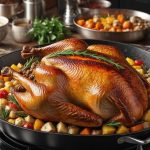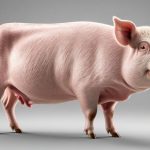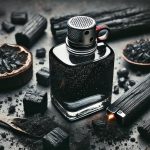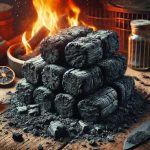When winter’s chill settles in, barbecue aficionados often wonder: can it be too cold to use a smoker effectively? The short answer is no, but the devil lies in the details. Smoking meat in frigid temperatures presents unique challenges and considerations that every pitmaster should be aware of.
Key Takeaways:
- Temperature Concerns: The optimal smoking temperature for meat typically ranges from 200-250°F. Extremely cold weather can make it difficult to maintain these temperatures consistently.
- Bacterial Growth: The danger zone for bacterial growth spans from 40-140°F, where pathogens thrive. Smoking in very cold conditions requires careful monitoring to ensure meat stays out of this range for extended periods.
- Choosing the Right Equipment: Thin-walled smokers struggle to retain heat in winter. Ceramic or gas smokers are better insulated options that can maintain steady temperatures more effectively.
- Tips for Success: Using a reliable thermometer is crucial to monitor internal meat temperatures. Preheating your smoker and shielding it from wind can also help maintain consistent heat levels.
Smoking meat in subzero temperatures isn’t just about culinary finesse—it’s about food safety too. In our comprehensive guide, we’ll delve into the strategies and equipment you need to conquer cold-weather smoking and serve up mouthwatering barbecue all year round. So, bundle up and join us as we explore the ins and outs of mastering the smoker in winter’s icy grip.
Contents
PelHeat Pellet Grill/Smoker Database
The PelHeat Pellet Grill/Smoker Database offers crucial insights to optimise smoking during colder temperatures. Pellet grills face challenges maintaining consistent heat in cold weather, affecting performance. Here’s how the database helps:
- Temperature Adjustment: Provides specific guidance on adjusting settings to counteract cold impacts, ensuring steady heat for optimal smoking.
- Fuel Types: Recommends suitable fuel types that burn efficiently in colder conditions, enhancing heat output and grill performance.
- Grill Placement: Advises on optimal grill placement to shield from wind or drafts, stabilising temperatures for consistent smoking.
- Insights and Strategies: Offers expert insights and proven strategies to fine-tune smoking techniques, tailored for cold weather conditions.
Utilising this resource empowers users to overcome cold-related challenges, ensuring a successful smoking experience with precise temperature control and enhanced outcomes.
Keeping Heat Inside The Pellet Grill/Smoker
To maintain optimal cooking temperatures in colder weather conditions, follow these expert tips:
- Temperature Settings: Adjust your grill to the appropriate P-setting for cold weather. A lower P-setting helps maintain higher temperatures but uses more pellets.
- Insulation: Enhance insulation by using a grill blanket or wrapping the grill with insulation material designed for smokers. This helps to retain heat efficiently.
- Sealing: Check for gaps or leaks around the grill door and seal them using heat-resistant gaskets or silicone. This prevents heat from escaping.
- Pellet Type: Opt for hardwood pellets designed for low and slow cooking in cold weather. They burn more consistently and produce more heat.
- Wind Protection: Position your grill in a sheltered area to minimize exposure to wind, which can rapidly decrease internal temperatures.
- Preheating: Preheat your grill for a longer duration before cooking to ensure that all internal components are adequately heated, especially in cold weather.
- Monitoring: Use a reliable digital thermometer to monitor internal temperatures closely. Avoid frequent opening of the grill, as it releases heat.
By implementing these strategies, you can effectively maintain heat inside your pellet grill/smoker even in challenging colder conditions, ensuring your cooking stays on track for perfect results.
What Type Of Controller Does Your Pellet Grill/Smoker Have?
| Controller Type | Description | Advantages |
| PID (Proportional-Integral-Derivative) | A PID controller is featured in many mid- to high-priced pellet grills. It precisely adjusts fuel delivery to maintain a consistent cooking temperature, enhancing cooking accuracy. | Offers precise temperature control, reduces temperature swings, improves cooking consistency. |
| Conventional | Some models still use conventional controllers. These controllers maintain temperature settings by intermittently feeding pellets into the fire, without the precision of PID technology. | Common in lower-priced models, straightforward operation, adequate for basic grilling needs. |
When considering “What Type Of Controller Does Your Pellet Grill/Smoker Have?”, it’s crucial to know the type of controller your grill uses significantly impacts cooking performance.
PID controllers, now common in mid- to high-priced models, offer superior temperature control and consistency compared to conventional controllers.
PID technology adjusts pellet feed rates based on real-time temperature feedback, ensuring your grill maintains the exact cooking temperature you set.

This precision is ideal for smoking and slow-cooking applications where maintaining a steady temperature over long periods is critical for achieving optimal results.
Conclusion
In conclusion, while cold weather presents challenges, it is entirely feasible to use a smoker effectively with the right strategies.
Maintaining consistent temperatures between 200-250°F can be tricky in freezing conditions, impacting both cooking times and food safety due to bacterial concerns. Choosing well-insulated smokers like ceramic or gas models, and utilizing hardwood pellets or adjusting settings for optimal heat output, are critical steps.
Techniques such as preheating, shielding from wind, and using digital thermometers further enhance control and mitigate temperature fluctuations. To navigate these challenges successfully, understanding your smoker’s capabilities and leveraging resources like temperature-adjustment guidance and optimal fuel types are essential.
These insights ensure that even in cold weather, your smoker performs reliably, producing delicious, perfectly cooked barbecue.


